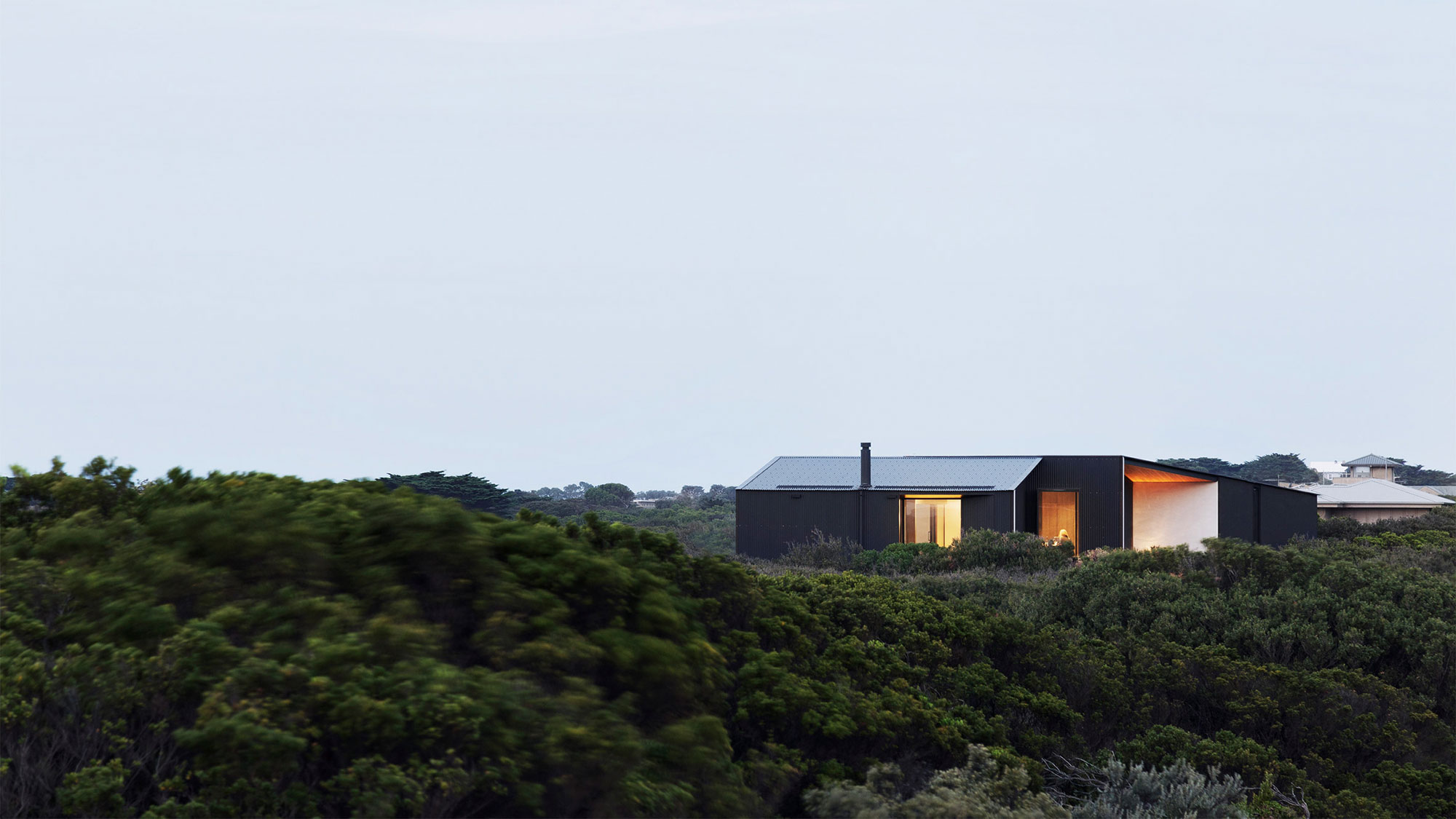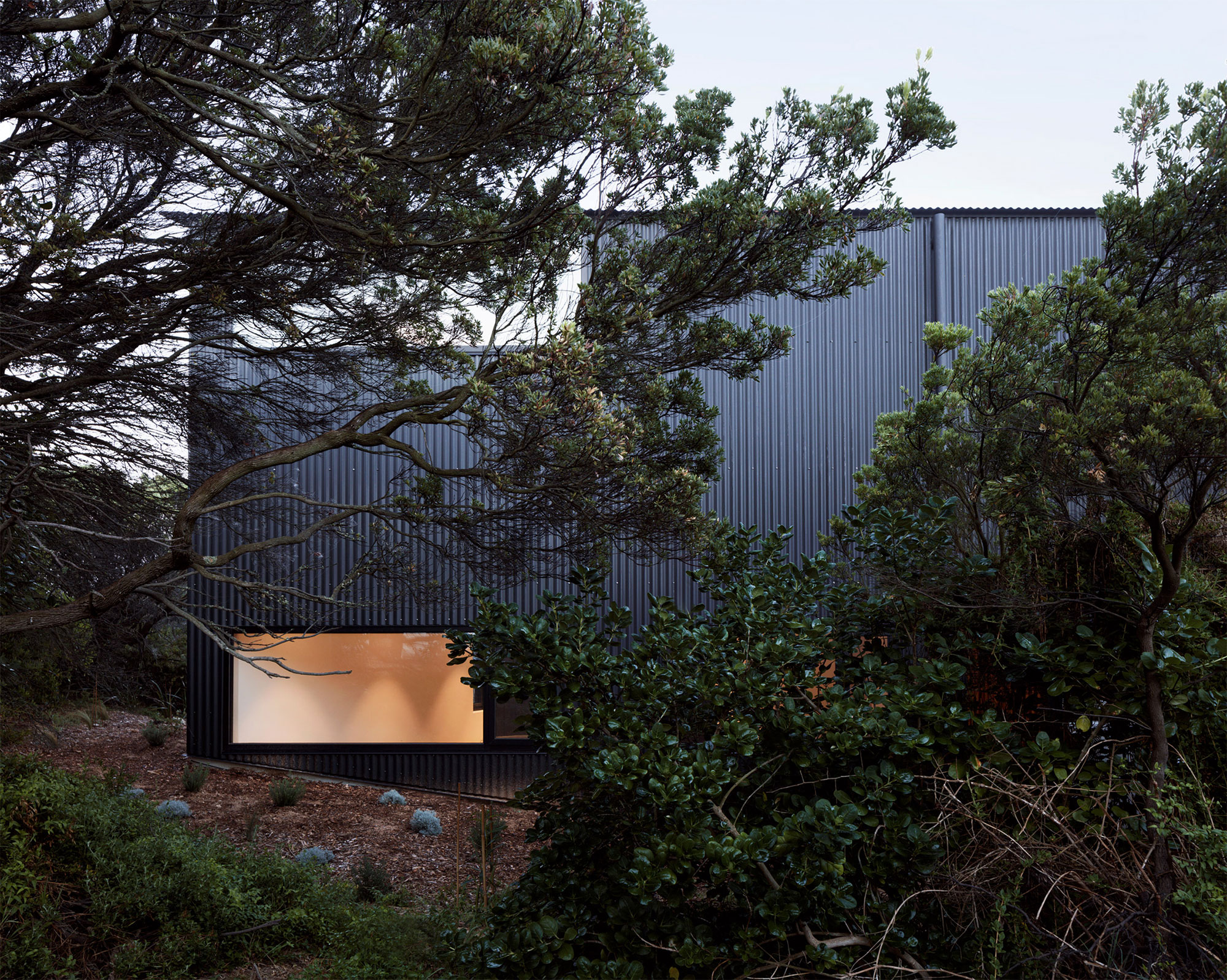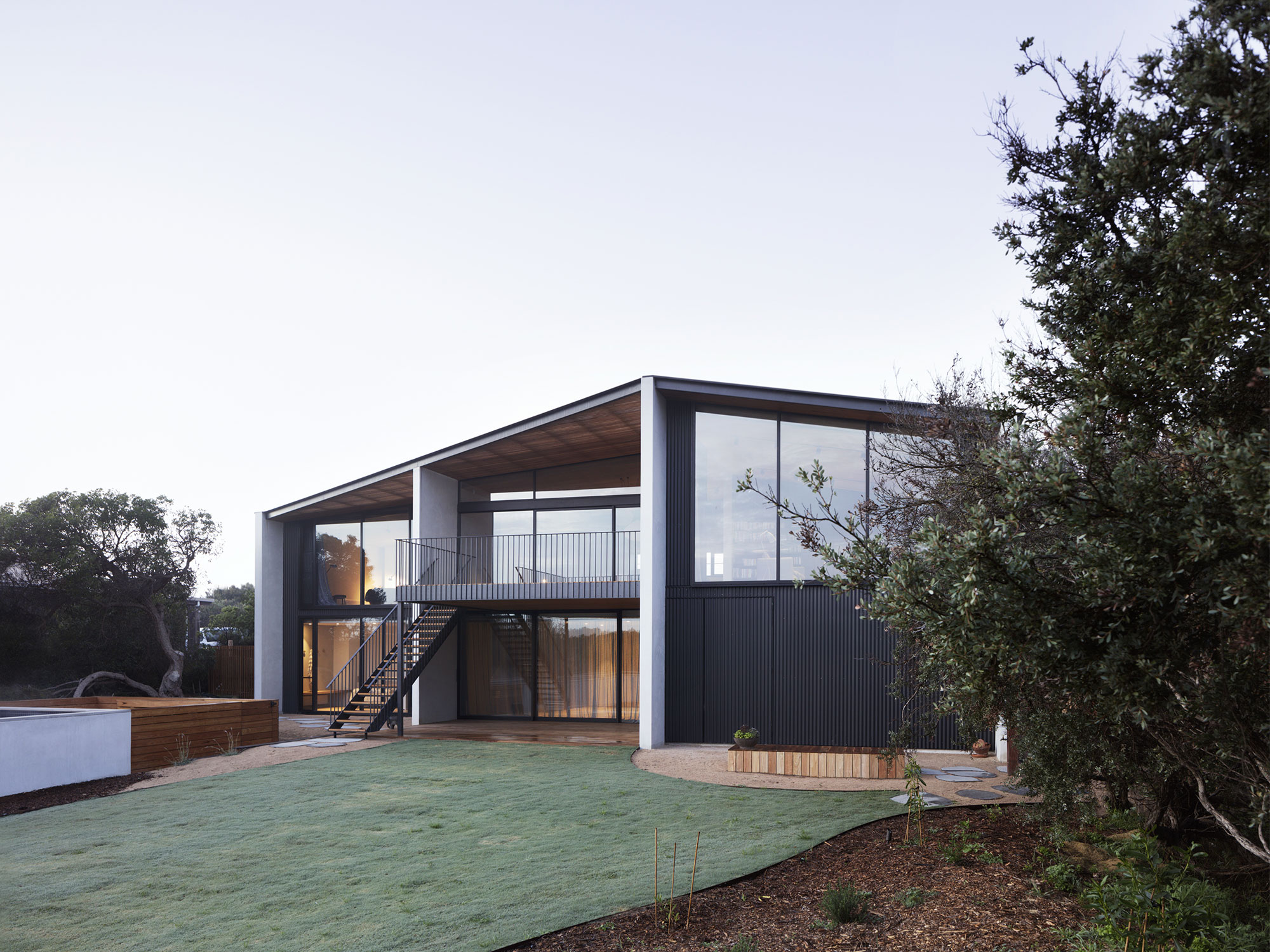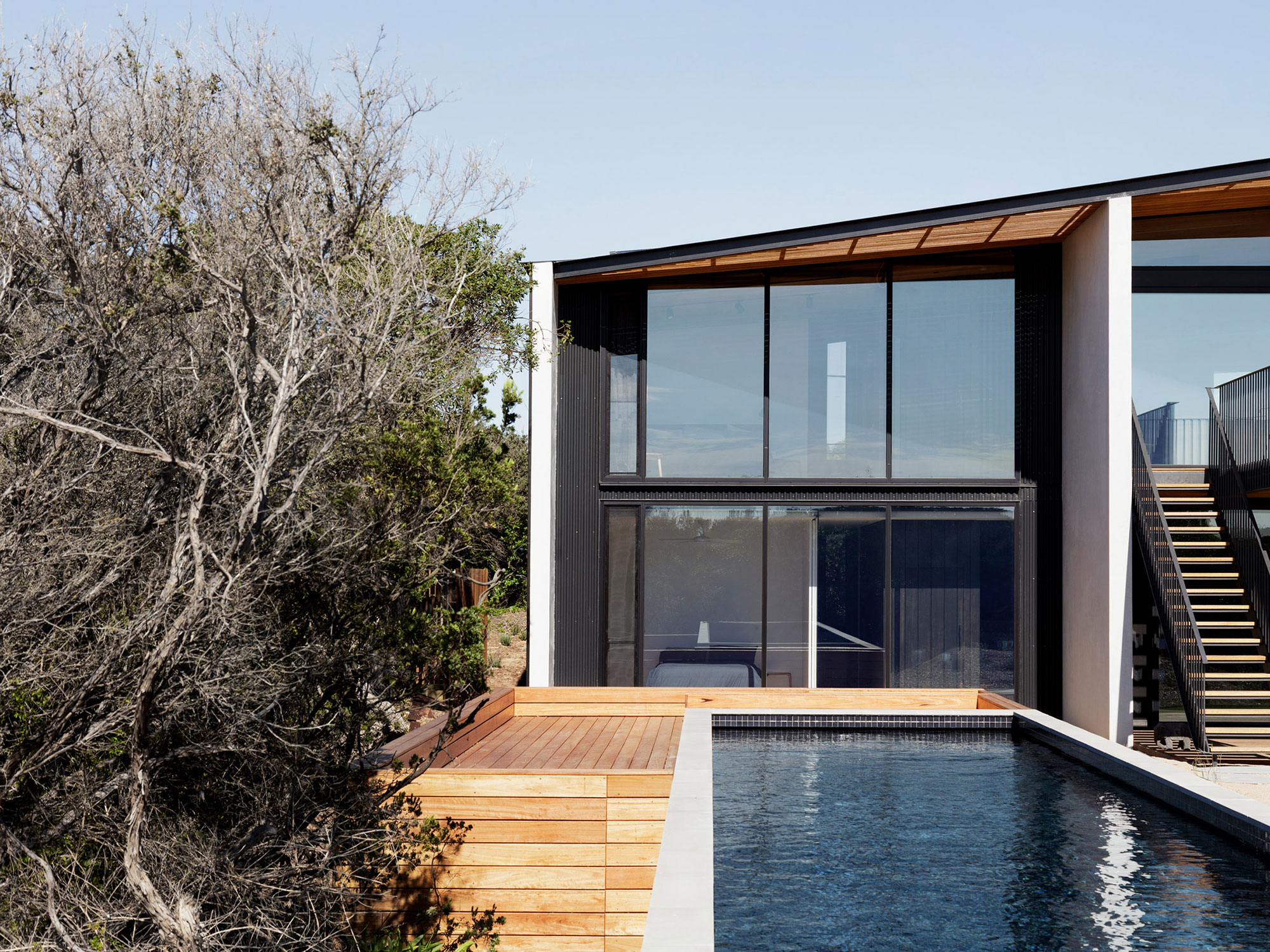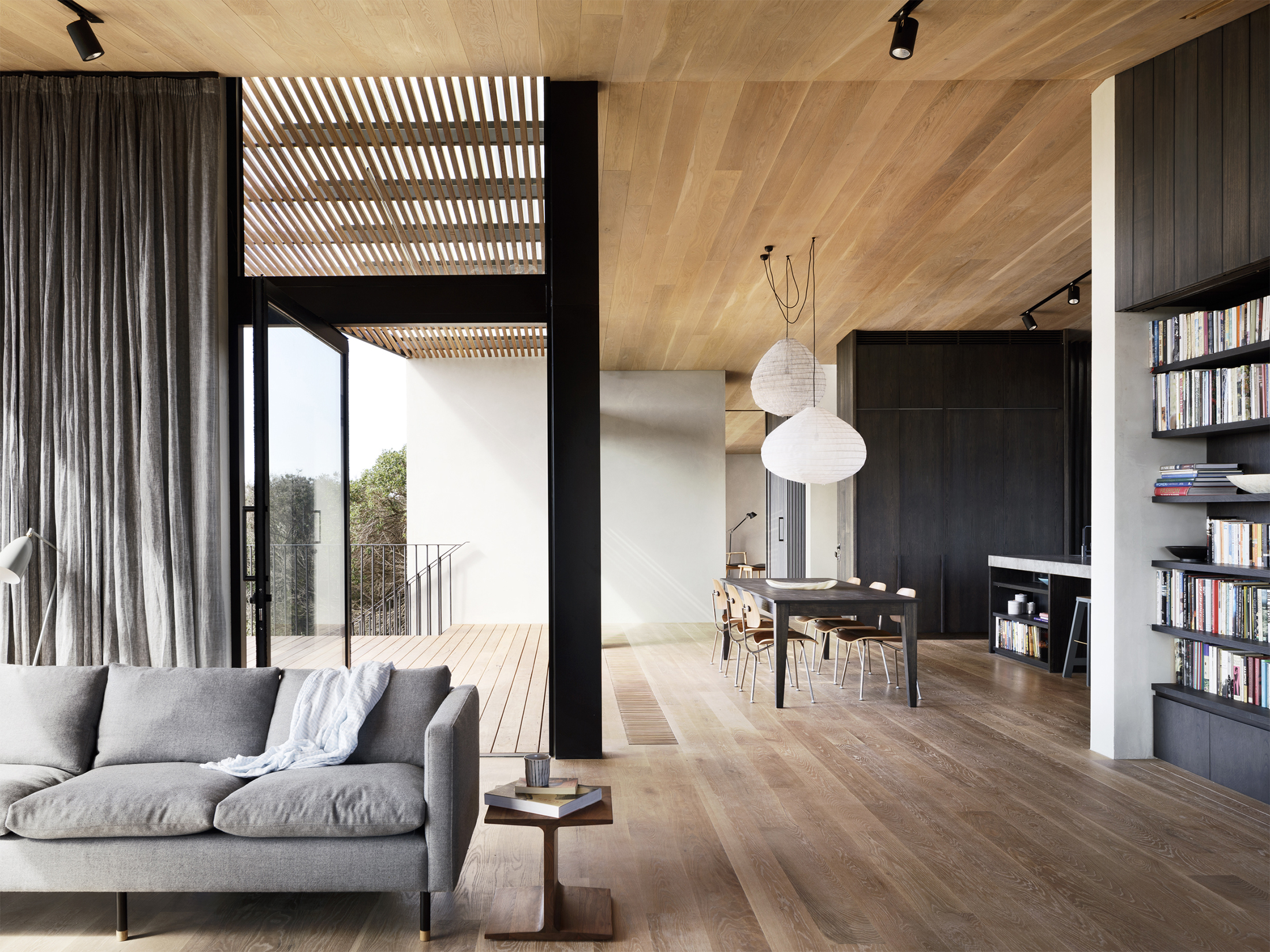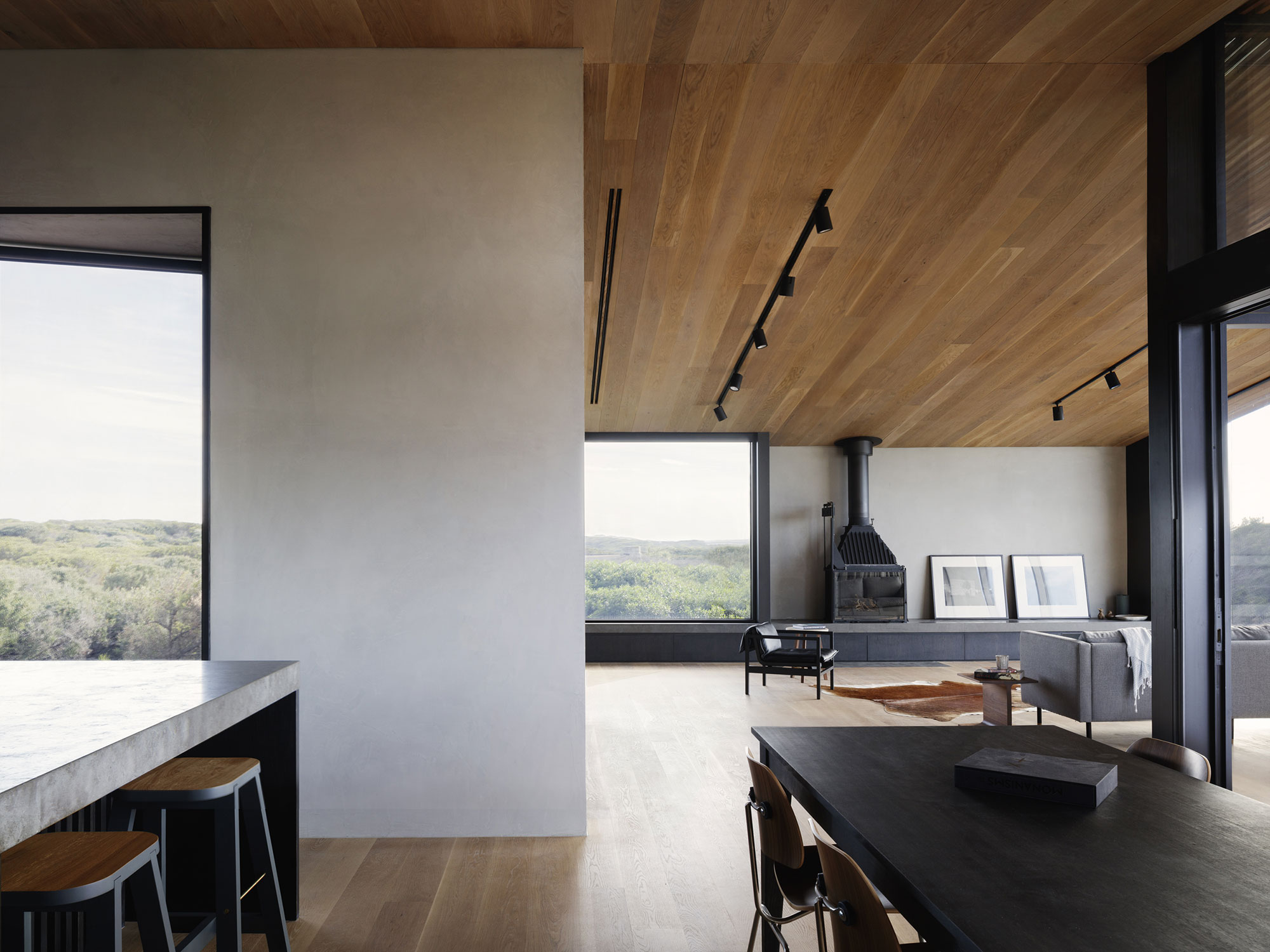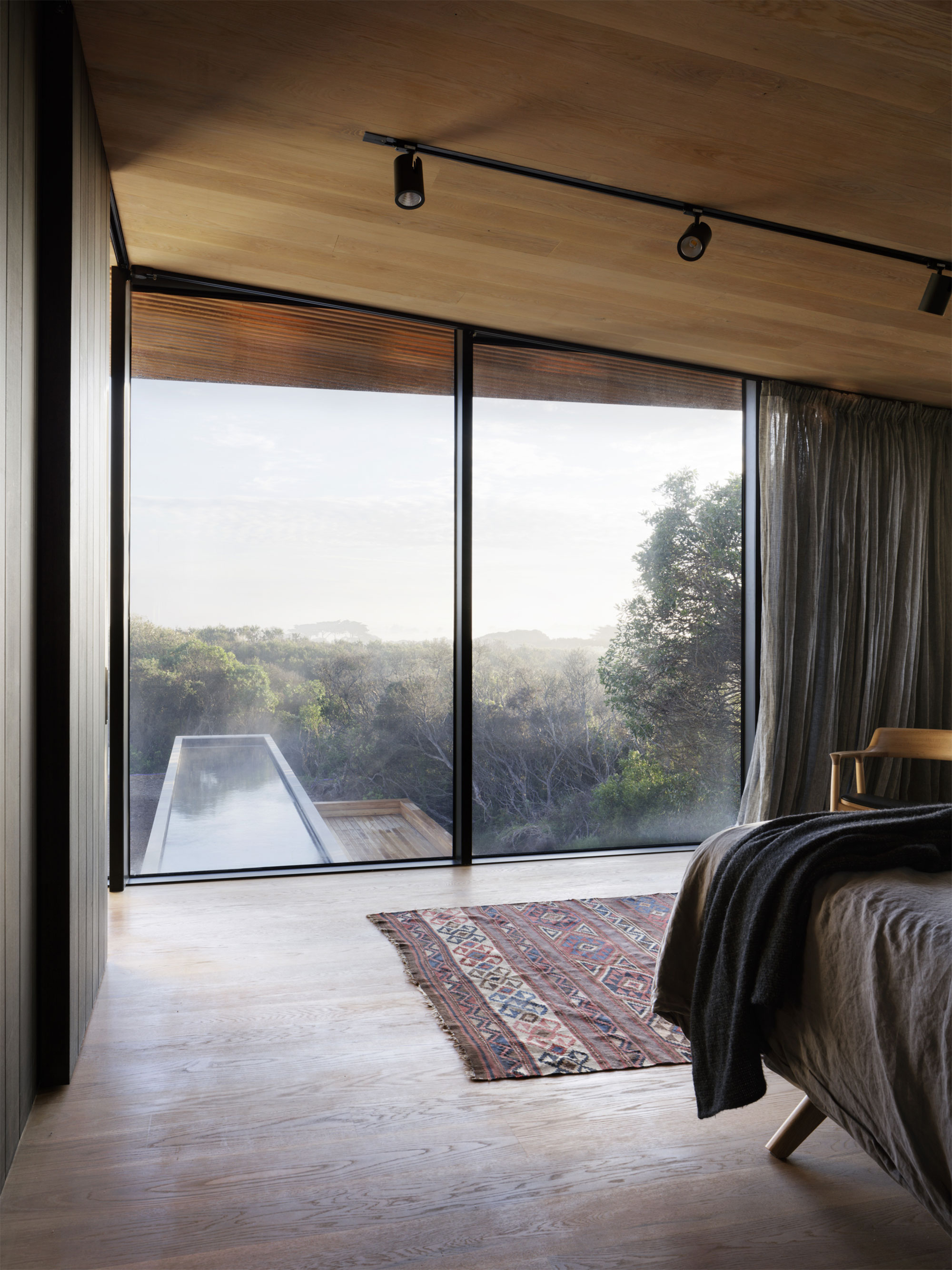Perched in the low rolling hills beyond the historic village of Barwon Heads on Australia’s coast, the striking roofline of a retired couple’s daily dwelling unexpectedly peeks above the surrounding Moonah trees and native scrub.
Barwon Heads, situated on the Bellarine Peninsula, near Geelong and Melbourne, has become a popular seaside destination for those escaping the city to play, lounge, and linger in this nearly 200-year old town first founded as a farming and fishing community. For the owners of this residence, the draw of this idyllic spot where the river meets the sea proved to entice them as well. So much so, they committed to an expansive new build on the original site of a dilapidated cedar cabin.
To achieve the ideal design for their new forever home, they hired Melbourne-based architecture firm, Lovell Burton. The couple’s main objective—create a primary residence for them and a getaway house for their oft-visiting three adult children and extended family.
While neither warm nor inviting, the austere exterior of the home in dark grey corrugated iron melds with the environment while providing a backdrop for the surrounding trees and dune brush. Reserved as it may be in aesthetic, the dwelling’s dark façade makes up for in purposefulness as its formidable shape and intentional placement deftly protects from inclement south-west weather patterns.
Two volumes, one rectilinear and one rhombus-shaped, intentionally slant across the structure in response to the area’s extreme conditions including gale force winds and severe thunderstorms prevalent in the area during warmer months.
Measuring almost 3500 square feet, the home departs completely from its formidable façade upon entering its welcoming light-filled interior. While the exterior protects the living environment within, the interior reciprocates inviting the outdoors in by visually opening to the surrounding coastal landscape through expansive sections of glass throughout the home.
Pleasant honey-toned wood ceiling beams and wood plank flooring offer an additional layer of warmth throughout the two-levels of the house. An open living area saturated in light extends the first floor.
Multiple seating and lounging areas furnished with mid-century modern style furniture invite conversation or relaxation while enjoying the endless views of the surrounding coastal terrain.
Looking to the north, panoramic views are abundant while drawing sunlight into shared living spaces for all to enjoy. Solid ventilation panels controlled within each area ensure views are unobstructed.
With its highly adaptive nature, the home was designed to answer the forever changing needs of the family with the superpower ability to “seamlessly open, close, expand and contract as desired.” Thus, allowing it to morph from exuberantly expansive to intimately cozy at the owner’s will.
Multiple dining areas within a neatly appointed kitchen include a limestone island and dark finished wood table encourage gathering and communing over long languid meals. Secretive storage within the kitchen’s cabinetry allows for tucking away of cooking accouterments and utensils in support of the minimalist aesthetic maintained throughout the home.
The master bedroom suite, located on the first level with the communal areas, is done in the same organic hues and materials as the rest of the house. The minimally furnished oasis with bath suite offers an inviting spot to respite from the activity of a busy household. A raised pool extends out into the surrounding landscape from the side of the house visible through the glass wall of the bedroom. A door offers an escape from inside to poolside for an early morning or midnight swim.
Finally, new landscaping aims to restore surrounding native vegetation while blending the building’s edges into the surrounding landscape’s Moonah and Boobialla and dune scrub brush. Photography ©Rory Gardiner



